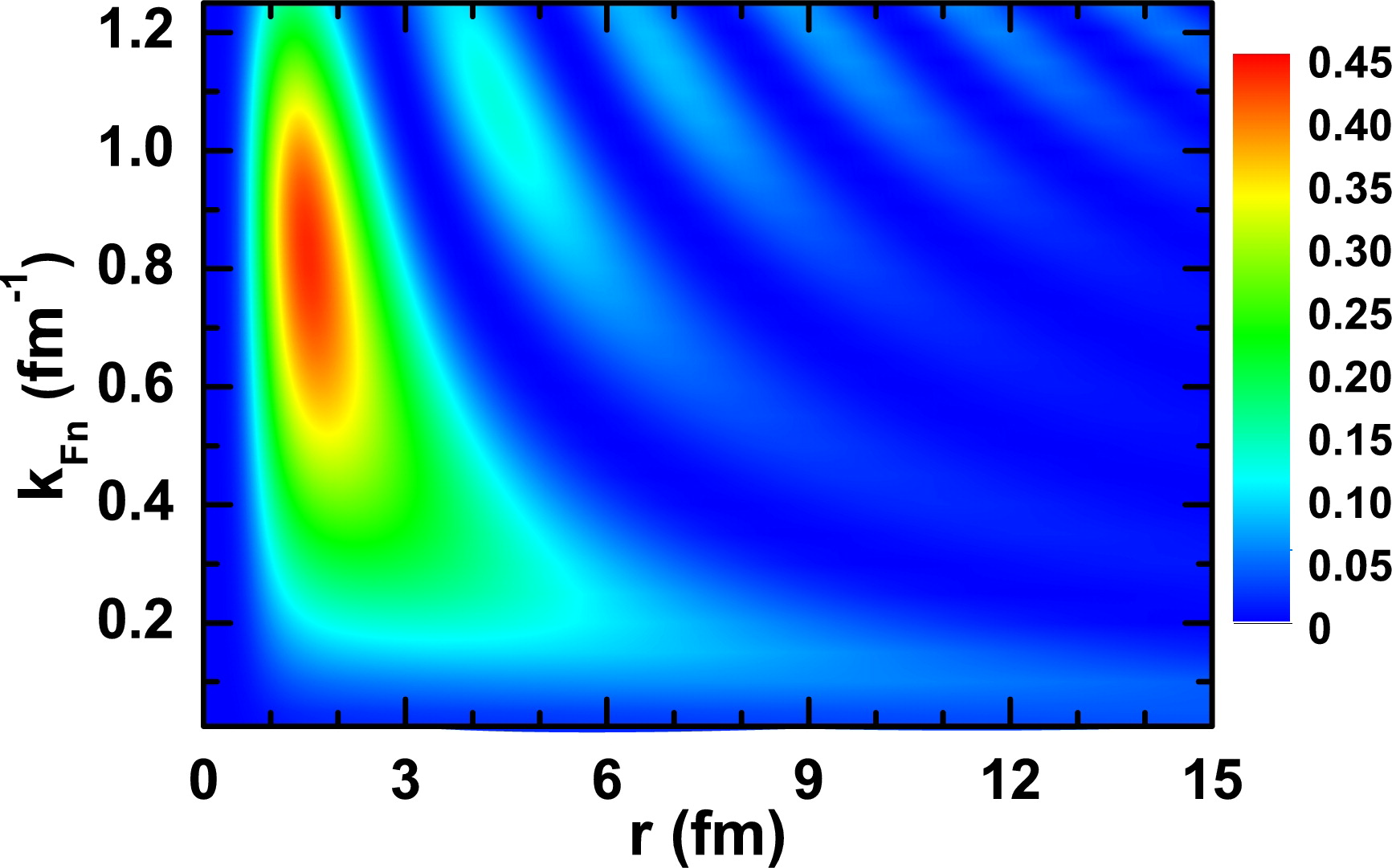Title: Relativistic description of BCS–BEC crossover in nuclear matter
Author(s): Bao Yuan Sun, Hiroshi Toki, and Jie Meng
Source: Physics Letters B
Volume: 683 Issue: 2-3 Page: 134-139 Published: 18 January 2010
Keyword(s): Pairing correlation; Nuclear matter; Relativistic pairing theory; Bare nucleon–nucleon interaction; Di-neutron spatial correlation; BCS–BEC crossover
KeyWords Plus: MEAN-FIELD THEORY; NEUTRON DRIP-LINE; STATE PROPERTIES; HALO; LI-11; SUPERCONDUCTIVITY; SUPERFLUIDITY; HE-6; PAIR
History: Received 15 April 2009; revised 30 September 2009; accepted 11 November 2009; Available online 9 December 2009
DOI: 10.1016/j.physletb.2009.11.065
Abstract: We study theoretically the di-neutron spatial correlations and the crossover from superfluidity of neutron Cooper pairs in the 1S0 pairing channel to Bose-Einstein condensation (BEC) of di-neutron pairs for both symmetric and neutron matter in the microscopic relativistic pairing theory. We take the bare nucleon-nucleon interaction Bonn-B in the particle-particle channel and the effective interaction PK1 of the relativistic mean-field approach in the particle-hole channel. It is found that the spatial structure of neutron Cooper pair wave function evolves continuously from BCS-type to BEC-type as density decreases. We see a strong concentration of the probability density revealed for the neutron pairs in the fairly small relative distance around 1.5 fm and the neutron Fermi momentum kFn is an element of [0.6, 1.0] fm-1. However, from the effective chemical potential and the quasiparticle excitation spectrum, there is no evidence for the appearance of a true BEC state of neutron pairs at any density. The most BEC-like state may appear at kFn – 0.2 fm-1 by examining the density correlation function. From the coherence length and the probability distribution of neutron Cooper pairs as well as the ratio between the neutron pairing gap and the kinetic energy at the Fermi surface, some features of the BCS-BEC crossover are seen in the density regions, 0.05 fm-1 < kFn < 0.7 (0.75) fm-1, for the symmetric nuclear (pure neutron) matter.
Figure: A two-dimensional plot for the probability density r2|Ψpair(r)|2 of the neutron Cooper pairs as a function of the neutron Fermi momentum kFn and the relative distance r between the pair partners in symmetric nuclear matter.
>> View Full Text <<

